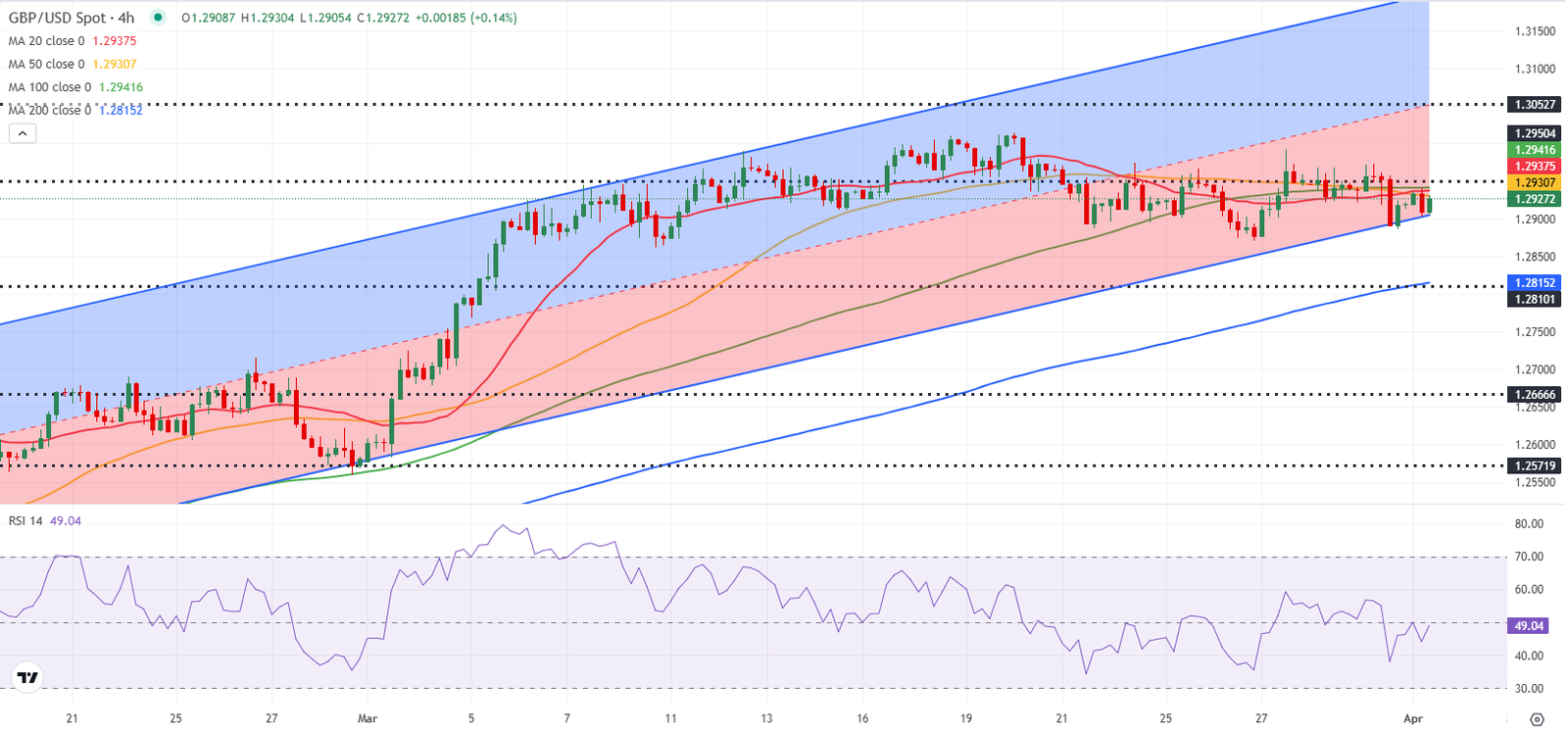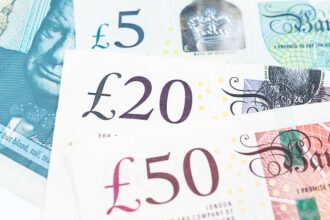- GBP/USD holds steady above 1.2900 after closing marginally lower on Monday.
- The technical outlook highlights a lack of buyer interest.
- Market participants await US data releases and tariff announcements.
GBP/USD recovered modestly after dipping below 1.2900 on Monday but closed the day in the red. The pair stays in a consolidation phase in the European session as market participants stay on the sidelines ahead of key macroeconomic events.
British Pound PRICE Last 7 days
The table below shows the percentage change of British Pound (GBP) against listed major currencies last 7 days. British Pound was the weakest against the Japanese Yen.
| USD | EUR | GBP | JPY | CAD | AUD | NZD | CHF | |
|---|---|---|---|---|---|---|---|---|
| USD | -0.25% | -0.06% | -0.73% | 0.41% | 0.35% | 0.76% | -0.12% | |
| EUR | 0.25% | 0.18% | -0.52% | 0.66% | 0.64% | 1.01% | 0.13% | |
| GBP | 0.06% | -0.18% | -0.70% | 0.48% | 0.46% | 0.83% | -0.09% | |
| JPY | 0.73% | 0.52% | 0.70% | 1.18% | 1.16% | 1.53% | 0.64% | |
| CAD | -0.41% | -0.66% | -0.48% | -1.18% | -0.02% | 0.35% | -0.57% | |
| AUD | -0.35% | -0.64% | -0.46% | -1.16% | 0.02% | 0.37% | -0.51% | |
| NZD | -0.76% | -1.01% | -0.83% | -1.53% | -0.35% | -0.37% | -0.92% | |
| CHF | 0.12% | -0.13% | 0.09% | -0.64% | 0.57% | 0.51% | 0.92% |
The heat map shows percentage changes of major currencies against each other. The base currency is picked from the left column, while the quote currency is picked from the top row. For example, if you pick the British Pound from the left column and move along the horizontal line to the US Dollar, the percentage change displayed in the box will represent GBP (base)/USD (quote).
The risk-averse market environment on growing concerns over an aggressive US trade policy weighing on the economic outlook caused GBP/USD to stretch lower at the beginning of the week.
Later in the day, the US economic calendar will feature JOLTS Job Openings data for February and the ISM Manufacturing Purchasing Managers Index (PMI) for March.
In case the headline PMI comes in above 50 and shows an ongoing expansion in the manufacturing sector’s business activity, the US Dollar (USD) could gather strength with the immediate reaction.
Nevertheless, investors could remain reluctant to take large positions ahead of US President Donald Trump’s tariff announcements on Wednesday, paving the way for choppy action in the pair in the near term.
GBP/USD Technical Analysis

The Relative Strength Index (RSI) indicator on the 4-hour chart stays close to 50 and GBP/USD trades near the 20-period, 50-period and the 100-period Simple Moving Averages (SMA), reflecting the pair’s indecisive action.
On the downside, 1.2900 (lower limit of the ascending channel) aligns as key support level before 1.2800, where the 200-day SMA is located. Looking north, resistances could be spotted at 1.2950 (20-day SMA), 1.3000 (static level, round level) and 1.3050 (mid-point of the ascending channel).
Pound Sterling FAQs
The Pound Sterling (GBP) is the oldest currency in the world (886 AD) and the official currency of the United Kingdom. It is the fourth most traded unit for foreign exchange (FX) in the world, accounting for 12% of all transactions, averaging $630 billion a day, according to 2022 data.
Its key trading pairs are GBP/USD, also known as ‘Cable’, which accounts for 11% of FX, GBP/JPY, or the ‘Dragon’ as it is known by traders (3%), and EUR/GBP (2%). The Pound Sterling is issued by the Bank of England (BoE).
The single most important factor influencing the value of the Pound Sterling is monetary policy decided by the Bank of England. The BoE bases its decisions on whether it has achieved its primary goal of “price stability” – a steady inflation rate of around 2%. Its primary tool for achieving this is the adjustment of interest rates.
When inflation is too high, the BoE will try to rein it in by raising interest rates, making it more expensive for people and businesses to access credit. This is generally positive for GBP, as higher interest rates make the UK a more attractive place for global investors to park their money.
When inflation falls too low it is a sign economic growth is slowing. In this scenario, the BoE will consider lowering interest rates to cheapen credit so businesses will borrow more to invest in growth-generating projects.
Data releases gauge the health of the economy and can impact the value of the Pound Sterling. Indicators such as GDP, Manufacturing and Services PMIs, and employment can all influence the direction of the GBP.
A strong economy is good for Sterling. Not only does it attract more foreign investment but it may encourage the BoE to put up interest rates, which will directly strengthen GBP. Otherwise, if economic data is weak, the Pound Sterling is likely to fall.
Another significant data release for the Pound Sterling is the Trade Balance. This indicator measures the difference between what a country earns from its exports and what it spends on imports over a given period.
If a country produces highly sought-after exports, its currency will benefit purely from the extra demand created from foreign buyers seeking to purchase these goods. Therefore, a positive net Trade Balance strengthens a currency and vice versa for a negative balance.



















